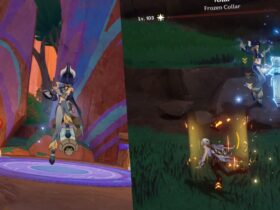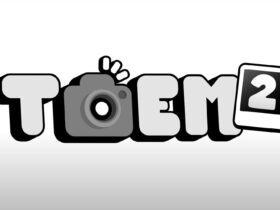Key Takeaways
- PS2 RPGs like
Breath of Fire: Dragon Quarter
innovated by ditching random encounters. - CyberConnect2’s
.hack//Infection
introduced unique monster generation mechanics. -
Xenosaga Episode 1: Der Wille Zur Macht
stood out with linear storytelling and engaging combat.
The PS1 proved itself in the RPG community thanks to Squaresoft’s support. This was heightened in the PS2 era with unique experiences like Final Fantasy 10, which pushed the series, genre, and medium forward with cutting-edge graphics and voice acting. However, it still used random encounters, which was a real bummer.

Related
8 PlayStation 2 Games Everyone Forgot About
The PlayStation 2 featured a lot of really great games. Here’s a look at some that people likely forgot about.
Even the HD remaster of the game included them when other Final Fantasy remasters, like Final Fantasy 7, added cheats to negate random encounters. It’s a shame, but thankfully there were other good JRPGs on the PS2 that didn’t use random encounters. Let’s celebrate their forward-thinking design choices and rank them based on just how excellent these games are overall.
7 Breath Of Fire: Dragon Quarter
A Hard Underground Life
Breath of Fire: Dragon Quarter
- Released
- November 2, 2002
- Developer(s)
- Capcom , Capcom Production Studio 4
Breath of Fire: Dragon Quarter is one of the hardest games on the PS2 and easily the hardest entry in the series. It was the first to have a modern steampunk aesthetic instead of a fantasy-based one. Players traverse an underground labyrinth, trying to outrun a government that is trying to kidnap a girl named Nina.
Players can enter combat by touching foes in dungeons and then move around on their turn in combat, sort of like a tactical RPG hybrid. Everything from moving to opening a chest to getting into battle ticked up a meter called the D-Counter. Once it reached 100%, it was game over. Breath of Fire: Dragon Quarter was an oppressive game, but hey, at least it didn’t beat its players with random encounters.
6 .hack//Infection
A Digital Battlefield
.hack//Infection
.hack//Infection is part one of a quadrilogy of action RPGs on the PS2. Players assume the role of Kite, a new user in the MMO known as “The World”. After he loses a friend and gets a mysterious power, Kite finds others to help him unravel the mysteries of “The World”.

Related
8 PlayStation 2 Games With Graphics That Have Aged The Best
Many games from the PlayStation 2 era look outdated to us now, but these titles’ graphics have stood the test of time.
Players can add two more party members to their team, and gameplay is standard for a hack-and-slash RPG. Monsters run around the zones that players can randomly generate with keywords. Leveling up is also pretty standard and progress does carry over between every game.
5 Xenosaga Episode 1: Der Wille Zur Macht
If Alien Were An Anime
Xenosaga Episode 1: Der Wille zur Macht is the first game in a trilogy that dominated the PS2. Progress didn’t directly carry over like the .hack games but there are bonuses to be had, and the story is linear throughout the Xenosaga trilogy. The lead role changes between scenarios.
It all begins with a scientist named Shion who is trying to create a way to fight back against an alien race known as the Gnosis. Then a bunch of religious iconography gets thrown in too. Enemies will litter dungeons and players can engage in turn-based battles once they touch them. Players can go into three-team battles and a majority of the cast can call mechs into battle too.
4 Dark Cloud 2
A Rogue Simulator
Dark Cloud 2
Dark Cloud 2 is an early example of a Roguelike spliced with a town simulator. Max and Monica travel through time to get history back on track after a chance encounter. In dungeons, they can find artifacts to rebuild towns and get bonuses for completing certain tasks.
Monsters are found out in the open, and players can swap between the two characters at will as they fight on. Each hero has a specific set of weapons they can carry and a special secondary ability as well. Max can pilot a mini-mech named Steve, and Monica can copy monsters and then turn into them during combat.
3 Kingdom Hearts 2
The Heartless Thrive
The Kingdom Hearts series has always been action-based, with the peak being Kingdom Hearts 2 on the PS2. Sora continued his adventures through various Disney Worlds, where he would help familiar characters fight back against Organization 13. As Sora, players could swing around their Keyblade or use magic in real time. Two A.I. characters could accompany him as well, from the standard duo of Goofy and Donald to Mulan and Jack Skeleton in their respective Disney Worlds.
It should be noted that Kingdom Hearts Re:Chain of Memories, a remake of a GBA game, has players go into instanced action arenas when enemies are encountered in a dungeon. Sora was by himself in that adventure, although there was a secondary campaign starring his friend Riku.
2 Final Fantasy 12
Gamble With This MMO-Like
- Released
- October 31, 2006
Final Fantasy 12 was the second mainline Final Fantasy game not to feature random encounters. It had similar combat to the first example, Final Fantasy 11, which was an MMO. Like that MMO, players could encounter enemies as they explored wide-open areas. Players could target these enemies and then turn-based combat would commence automatically on the spot.
7:46

Related
30 PS2 Hidden Gems Everyone Missed
The PS2 games of old might be outdated, but that doesn’t mean that these offerings aren’t still fun to play.
While Vaan and the other party members, of three, would finish enemies off by themselves, players could interject and submit commands manually. Players could also set up Gambits in Final Fantasy 12’s menu, which were like programs to have party members obey direct lines of command from healing on percentages to always attacking the same enemy as their teammates.
1 Persona 4
Solve Crimes And Fight Slimes
Persona 4 is split into two major gameplay mechanics. Half of the game is spent in school and interacting with friends, while the other part explores dungeons and engages in turn-based combat. The game uses random layouts as players explore major dungeons during the story.
Found in these mazes are shadows and, once touched, they will become a cavalcade of monsters to fight. Players are formed into parties of four, although there is a guide that helps players through battles too. For many, it’s one of the best Persona games ever made thanks to the story and blending of mechanics.

More
6 Most Complicated Battle Systems In Final Fantasy Games
These battle systems in Final Fantasy games can be frustrating.














Leave a Reply